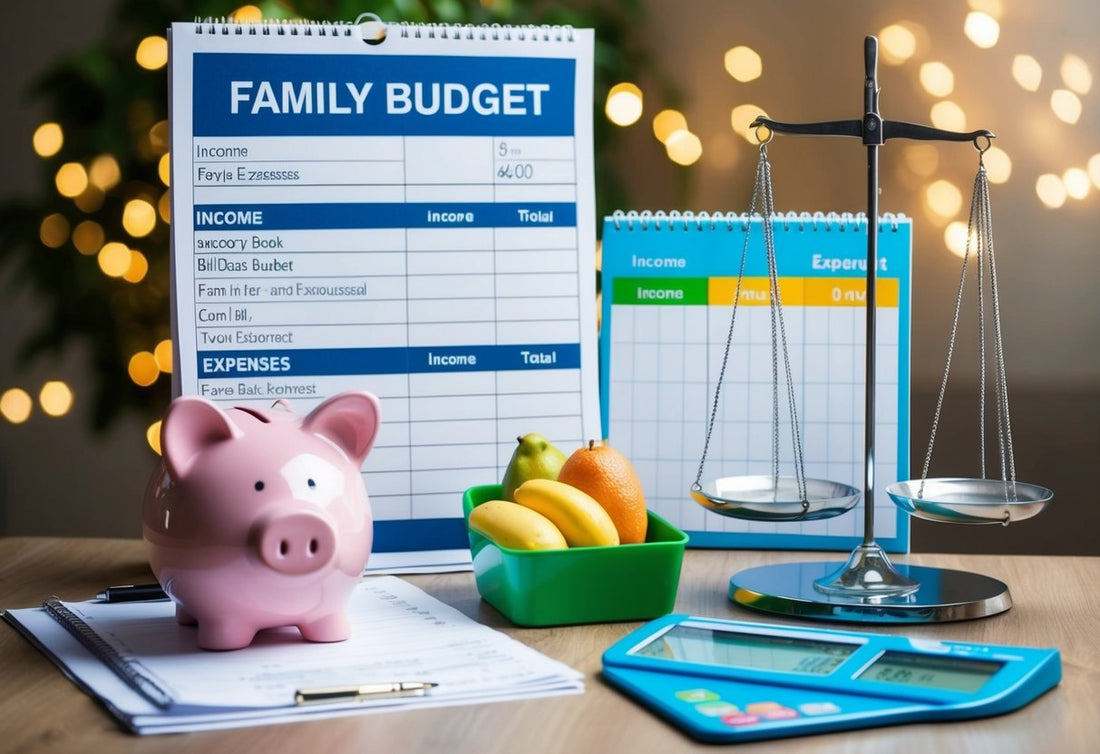
5 Strategies for Balancing a Family Budget on a Single Income: Thrive and Save with These Smart Tips
Share
Managing a family's finances on a single income can be challenging, but it's not impossible. Many families successfully navigate this situation with careful planning and smart strategies.

We've compiled five effective approaches to help you balance your family budget on one income. These practical tips can help you make the most of your resources, reduce expenses, and achieve your financial goals. By implementing these strategies, you can create a stable financial foundation for your family's future.
1) Create a Detailed Budget

We understand the importance of a well-crafted budget when managing a household on a single income. Creating a detailed budget is the cornerstone of financial stability for our families.
Let's start by listing all our monthly income sources. This includes salaries, bonuses, and any other regular payments we receive.
Next, we'll categorize our expenses. We should include fixed costs like rent or mortgage, utilities, and insurance. Don't forget variable expenses such as groceries, transportation, and entertainment.
It's crucial to be thorough and honest about our spending habits. We need to track every dollar to get an accurate picture of our financial situation.
Once we have all the information, we can use budgeting tools or spreadsheets to organize our data. This visual representation helps us see where our money is going and identify areas for potential savings.
Remember to include savings and debt repayment in our budget. Even small contributions can make a big difference over time.
We should review and adjust our budget regularly. As our family's needs change, so will our financial priorities.
2) Prioritize Essential Expenses

When living on a single income, it's crucial to focus on necessities first. We need to distinguish between wants and needs, ensuring our family's basic requirements are met.
Essential expenses typically include housing, utilities, food, and healthcare. We should allocate funds to these areas before considering discretionary spending.
Creating a list of priorities can help us make informed decisions about where our money goes. By identifying our most important expenses, we can ensure they're covered each month.
It's also wise to review our essential costs regularly. We might find ways to reduce them without sacrificing quality of life. For example, we could shop around for better insurance rates or negotiate lower bills with service providers.
Remember, what's essential for one family might not be for another. We need to tailor our priorities to our unique situation and values.
By focusing on essential expenses first, we create a solid foundation for our family's financial well-being. This approach helps us maintain stability and peace of mind, even on a single income.
3) Meal Planning and Home-Cooked Meals

Meal planning is a game-changer for families on a single income. We can save significant money by creating a weekly menu and shopping list based on sales and seasonal produce.
Cooking at home is not only more affordable but also healthier. We can prepare large batches of meals and freeze portions for busy weeknights, reducing the temptation to order takeout.
Involving kids in meal prep teaches valuable life skills and can make dinnertime more enjoyable. We might even discover new family favorites while experimenting with budget-friendly recipes.
Buying ingredients in bulk and prioritizing versatile staples helps stretch our food budget further. We can repurpose leftovers into new meals, minimizing waste and maximizing our grocery dollars.
Planting a small herb garden or joining a community garden can provide fresh ingredients at a fraction of the cost. These simple steps make balancing our family budget on a single income more manageable.
4) Shop for Deals and Discounts

Smart shopping can stretch our single income further. We've found that looking for deals and discounts is a great way to save money on everyday purchases.
Coupons are our best friends. We clip them from newspapers, magazines, and online sources. Many stores offer digital coupons through their apps or websites, making savings even more accessible.
We always compare prices before buying. Online tools and apps help us find the best deals quickly. Sometimes, buying in bulk can lead to significant savings on items we use regularly.
Timing our purchases is crucial. We keep an eye out for seasonal sales and holiday discounts. Black Friday, Cyber Monday, and end-of-season clearances often offer fantastic bargains.
Loyalty programs and cashback offers are worth exploring. Many stores and credit cards provide rewards for our purchases. These points or cashback add up over time, giving us extra savings.
We've also found that joining local buy-nothing groups or exploring second-hand options can lead to surprising deals. Sometimes, we find exactly what we need for free or at a fraction of the retail price.
5) Use a Savings Jar for Leftover Change
We've found that a simple savings jar can make a big difference in our family budget. Every time we come home, we empty our pockets and purses of loose change.
This small habit adds up quickly. We're often surprised by how much we accumulate over time. It's like finding free money!
We make it fun for the kids by letting them help count and roll the coins. It's a great way to teach them about saving and math skills.
Once our jar is full, we decide as a family how to use the money. Sometimes we put it towards a fun outing or a special treat. Other times, we add it to our emergency fund or use it for unexpected expenses.
This simple strategy helps us stretch our single income further. It's amazing how those small amounts can make a real difference in our overall budget.
